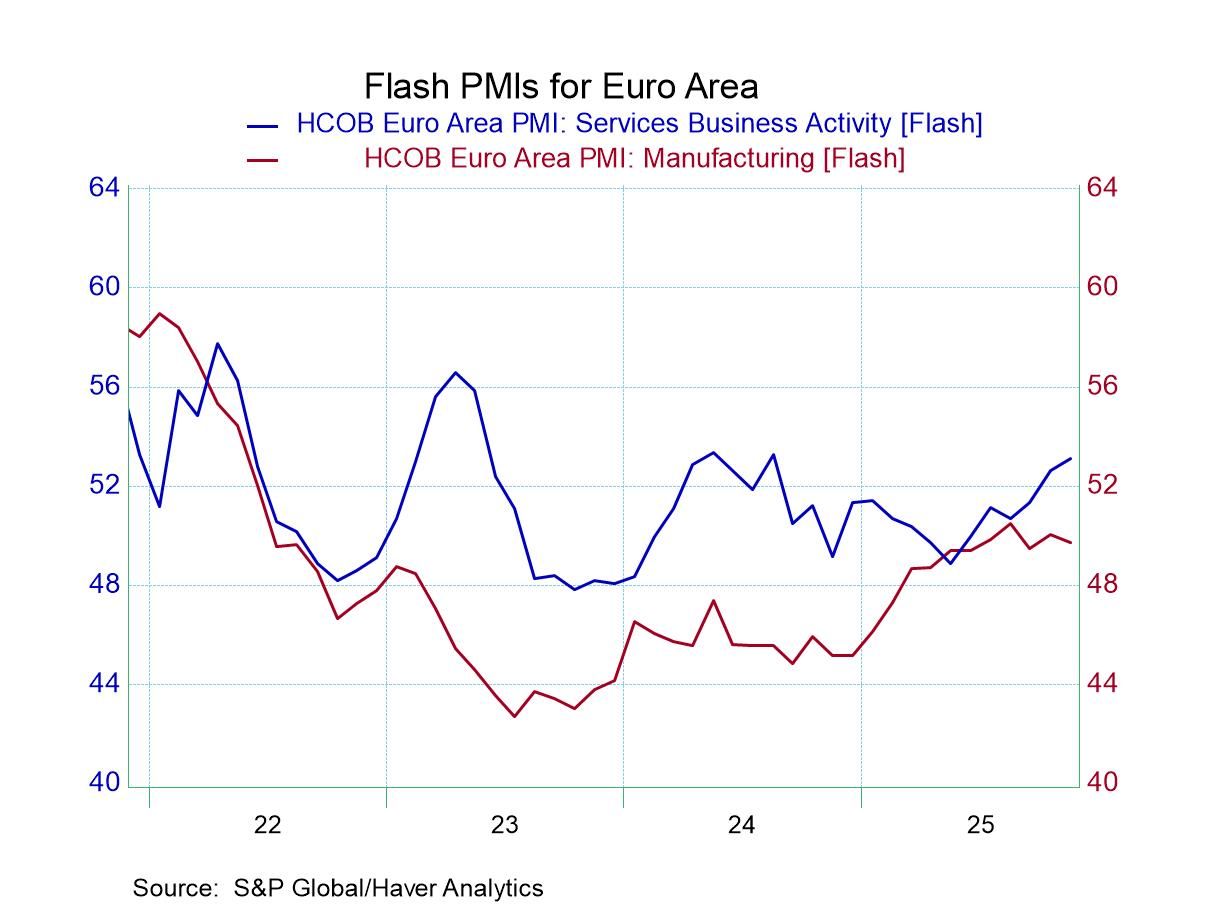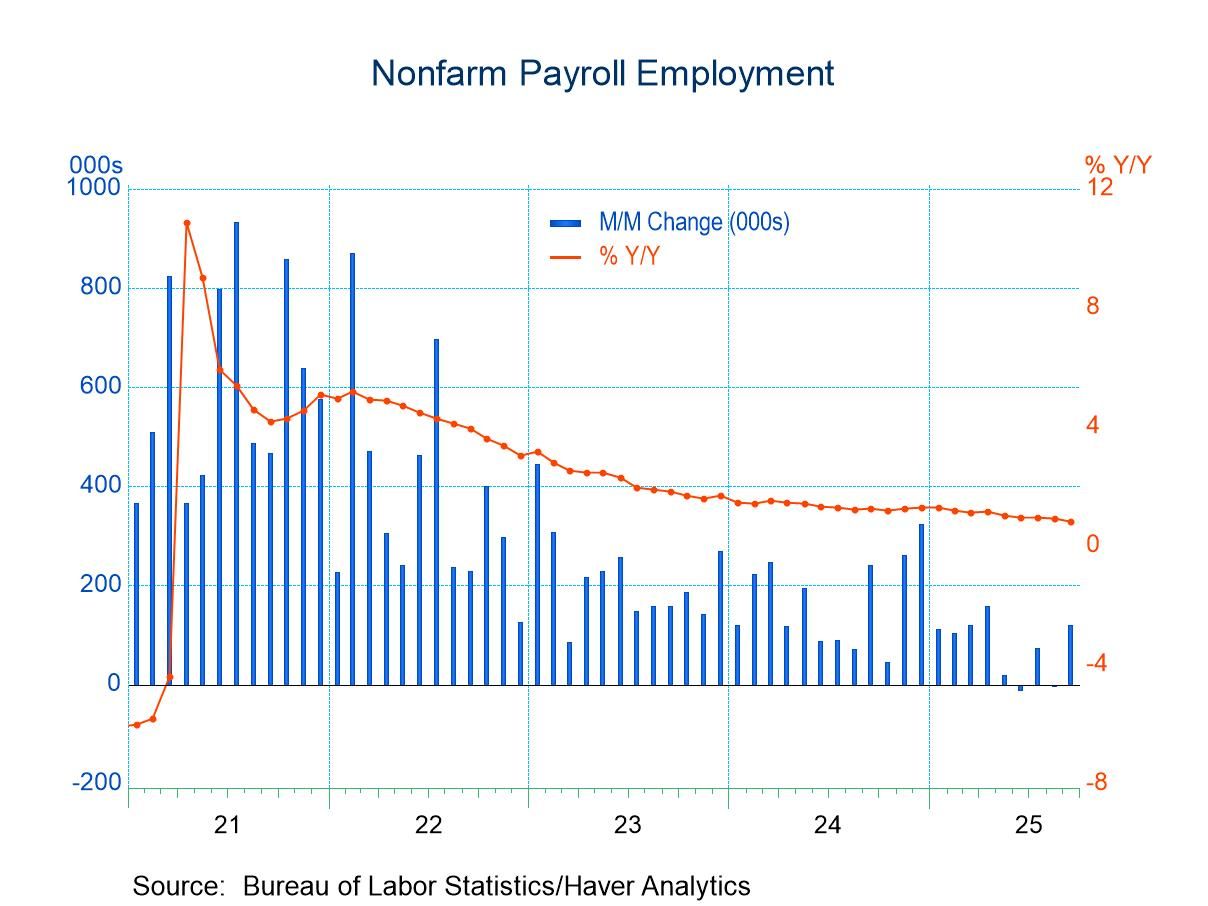U.S. Wholesale Inventories & Sales Increase in March
by:Tom Moeller
|in:Economy in Brief
Summary
- Inventories trend higher y/y.
- Sales increase broadly.
- Inventory-to-sales ratio steadies.


Wholesale trade inventories increased 0.4% (2.2% y/y) during March after rising 0.5% in February, revised from 0.3% after a 0.8% January rise. The increase compared to expectations for a 0.5% rise in the Informa Global Markets Survey and compared to a 0.6% gain in the advance report issued two weeks ago.
Durable goods inventories rose 0.6% in March (1.5% y/y) after rising 0.5% in February. Machinery inventories, the largest sector, increased 0.6% (1.7% y/y) while inventories of motor vehicles & parts, the second largest grouping, rose 1.2% (0.8% y/y). Furniture inventories strengthened 2.7% (6.8% y/y) while electrical equipment inventories declined 1.0% (-3.1% y/y). Inventories of nondurable goods edged 0.1% higher (3.4% y/y). Drug inventories, which make up one-quarter of nondurable inventories, advanced 1.0% (4.6% y/y). Grocery inventories, the second largest category, rose 0.4% (8.3% y/y). Apparel inventories fell 0.8% (-6.5% y/y) and chemical inventories rose 2.1% both m/m and y/y. Petroleum inventories increased 0.7% (0.3% y/y).
Sales at the wholesale level rose 0.6% (6.1% y/y) in March after rising 2.0% in February and falling 0.9% in January. A 0.9% March rise had been expected in the Action Economics Forecast Survey.
Durable goods sales rose 1.0% (8.5% y/y) in March after strengthening 3.2% in February. Sales of electrical equipment & electronic goods, the largest sector, rose 2.5% (20.9% y/y), after a 2.3% rise. Professional and commercial equipment sales, which includes computers, rose 1.2% (11.9% y/y), while vehicle sales declined 1.0% (1.1% y/y). Sales of machinery improved 0.7% (4.2% y/y). Nondurable product sales rose 0.3% (3.9% y/y) in March after gaining 0.9% in February. Drug store sales, the largest category, increased 2.8% (13.4% y/y), while grocery store sales eased 0.2% (+4.3% y/y). Sales of apparel weakened 0.8% (+3.5% y/y) while paper sales declined 1.7% (0.5% y/y). Petroleum product sales fell 4.6% both m/m and y/y.
The inventory-to-sales (I/S) ratio at the wholesale level remained at 1.30 in March and has been moving lower for the last two years.
The wholesale I/S ratio for durable goods eased to 1.69 in March and also has been trending lower. The machinery ratio fell to 2.92 while motor vehicles rose to 1.78. The I/S ratio for nondurable goods slipped to 0.93 and remained down from 1.02 early in 2023. The drug industry ratio eased to 0.94. Apparel's I/S ratio held at 2.06, but remained below its 2.28 level one year earlier, and has been declining since early 2023. The petroleum industry I/S ratio rose to 0.33.
The wholesale trade figures are available in Haver's USECON database. The expectations figure for inventories is contained in the MMSAMER database. Expectations for sales are from the AS1REPNA database.
Assessing Maximum Employment from Federal Reserve Governor Adriana D. Kugler is available here.


Tom Moeller
AuthorMore in Author Profile »Prior to joining Haver Analytics in 2000, Mr. Moeller worked as the Economist at Chancellor Capital Management from 1985 to 1999. There, he developed comprehensive economic forecasts and interpreted economic data for equity and fixed income portfolio managers. Also at Chancellor, Mr. Moeller worked as an equity analyst and was responsible for researching and rating companies in the economically sensitive automobile and housing industries for investment in Chancellor’s equity portfolio. Prior to joining Chancellor, Mr. Moeller was an Economist at Citibank from 1979 to 1984. He also analyzed pricing behavior in the metals industry for the Council on Wage and Price Stability in Washington, D.C. In 1999, Mr. Moeller received the award for most accurate forecast from the Forecasters' Club of New York. From 1990 to 1992 he was President of the New York Association for Business Economists. Mr. Moeller earned an M.B.A. in Finance from Fordham University, where he graduated in 1987. He holds a Bachelor of Arts in Economics from George Washington University.





 Global
Global
